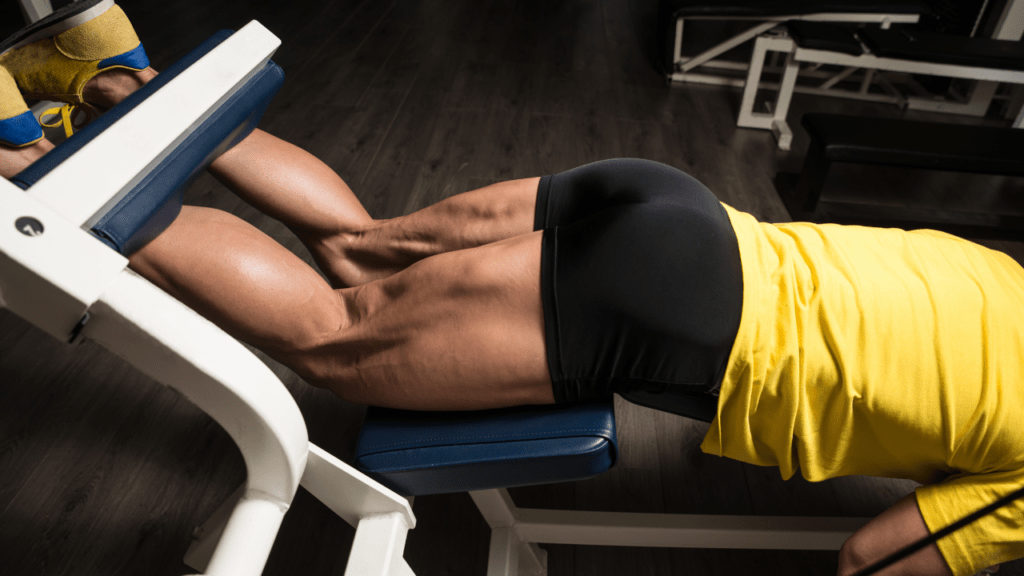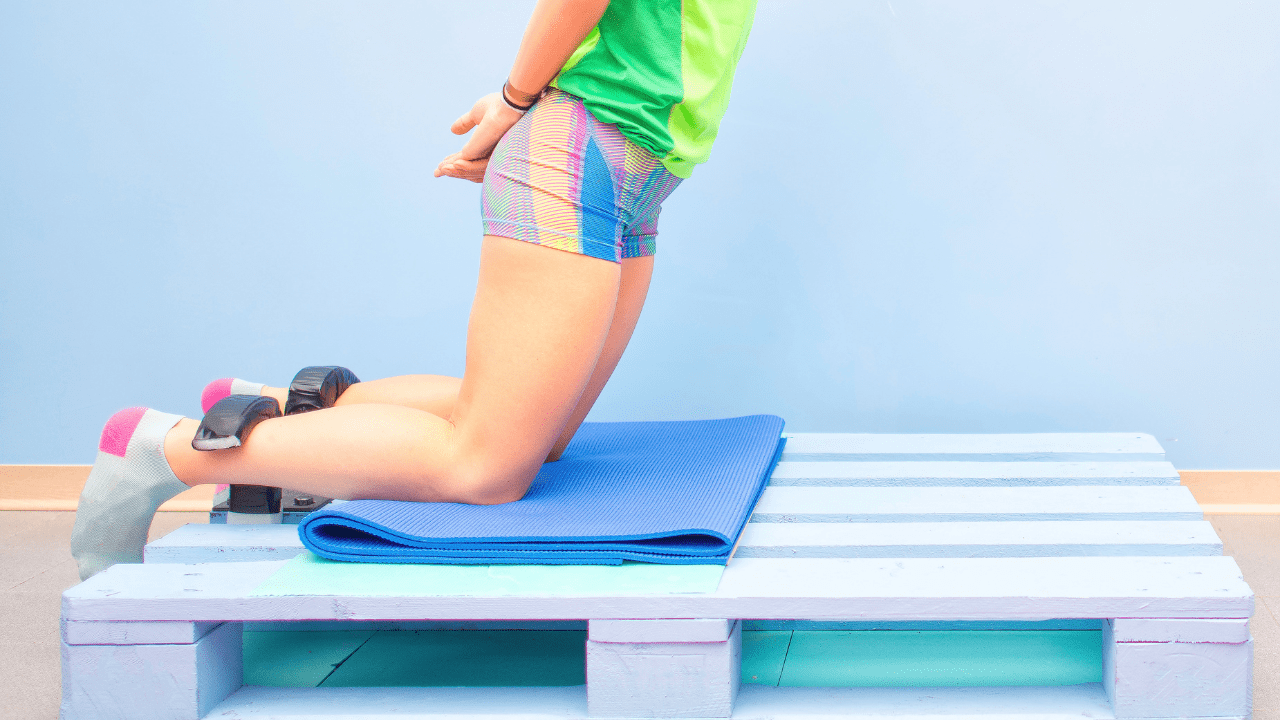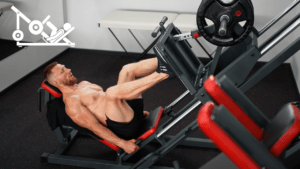You may have heard that achieving strong, defined legs requires hours of squats and lunges at the gym. But what if I told you there’s a lesser-known exercise that can deliver even better results? Say goodbye to the misconception that leg day means endless sets of traditional exercises. Today, we’re diving deep into the world of Nordic curls – a powerful, yet often overlooked, exercise that promises to revolutionize your leg workout routine.
1. What are Nordic Curls?
Let’s start with the basics. Nordic curls, also known as Nordic hamstring curls or Nordic leg curls, are a challenging bodyweight exercise designed to target and strengthen your hamstrings. Unlike traditional hamstring exercises like leg curls on machines, Nordic curls require minimal equipment and can be done practically anywhere.
imagine you’re kneeling on the ground with your feet anchored, and then you slowly lower your upper body towards the floor, engaging your hamstrings to control the movement. It’s a simple yet effective exercise that packs a serious punch when it comes to building strength and stability in your legs.
Benefits of Nordic Curls
Now, you might be wondering, “Why should I bother adding Nordic curls to my workout routine?” Well, let me tell you – the benefits are worth it. First and foremost, Nordic curls are unmatched when it comes to targeting your hamstrings. These muscles play a crucial role in everyday movements like walking, running, and jumping, so keeping them strong is essential for overall lower body function.
But that’s not all. Nordic curls also help improve flexibility and reduce the risk of injury, particularly in the hamstrings and knees. By strengthening these muscles through controlled, eccentric movements, you’ll enhance your athletic performance and prevent common issues like strains and tears.
Unlocking the Potential
So, how do you perform Nordic curls correctly? It’s all about mastering the technique. Start by kneeling on a soft surface with your feet anchored securely under a stable object or with a partner holding them down. Slowly lower your upper body towards the ground, keeping your back straight and your core engaged. Use your hamstrings to control the descent, then push yourself back up to the starting position using your hands for support if needed.
For beginners, it’s essential to start slow and focus on maintaining proper form throughout each rep. As you become more comfortable with the movement, you can gradually increase the difficulty by lowering yourself closer to the ground or performing the exercise on a declined surface.
2. Incorporating Nordic Curls into Your Routine
Ready to give Nordic curls a try? Incorporating them into your workout routine is easier than you might think. Whether you’re a seasoned athlete or just starting your fitness journey, there’s a variation of Nordic curls that’s perfect for you. From basic kneeling variations to advanced single-leg progressions, there’s no shortage of ways to challenge yourself and reap the rewards of this powerful exercise.
Keep watching as we look into different ways to exercise, avoid common mistakes, and learn tips to get the best results. Prepare to improve your legs and make your workouts better!

3. How to Perform Nordic Curl Variations
Before we dive into the specific variations, let’s quickly review the basic technique for performing Nordic curls. As mentioned earlier, start by kneeling on a soft surface with your feet anchored securely. Lower your upper body towards the ground while engaging your hamstrings to control the movement.
Once you’ve mastered the basic form, you’re ready to start experimenting with different variations to keep your workouts fresh and challenging.

Single-leg Nordic Curls
Looking to ramp up the intensity? Try performing Nordic curls on a single leg. This variation requires even greater stability and control, as you’re relying solely on one leg to support your body weight. Start by mastering the basic two-legged version before attempting single-leg curls, and be prepared to feel the burn in your hamstrings like never before.
Decline Nordic Curls
Take your Nordic curls to new heights by performing them on a declined surface. This variation increases the range of motion and places added emphasis on the eccentric phase of the exercise, making it an excellent choice for advanced athletes looking to push their limits. Just be sure to use proper form and start with a moderate decline angle to avoid overloading your hamstrings.
Partner-Assisted Nordic Curls
If you need help, try partner-assisted leg exercises. Just ask a friend to hold your feet while you work out. This is good for beginners or people getting over injuries. It helps you get stronger safely.
Weighted Nordic Curls
Ready to take your strength training to the next level? Add some resistance to your Nordic curls with weighted variations. You can use a weighted vest, ankle weights, or even a barbell placed across your shoulders to increase the challenge and build muscle mass. Just be sure to start with a light weight and gradually increase as you become more comfortable with the movement.
Swiss Ball Nordic Curls
Looking to add an element of instability to your workout? Try performing Nordic curls on a Swiss ball. This variation engages your core and stabilizes muscles even further, helping improve balance and coordination while targeting your hamstrings. Just be prepared for a greater challenge and start with a smaller range of motion until you feel confident on the ball.
4. Incorporating Nordic Curl Variations Into Your Routine
Now that you’re familiar with some of the most popular Nordic curl variations, it’s time to put them into practice. Incorporate a mix of these variations into your leg workout routine to keep your muscles guessing and maximize your results.
Whether you’re looking to build strength, improve flexibility, or prevent injury, there’s a Nordic curl variation that’s perfect for you. So, don’t be afraid to mix things up and push yourself to new heights with these innovative exercises. Your legs will thank you later.

5. Common Mistakes in the Nordic Curl Technique
Despite its effectiveness, mastering the Nordic curl isn’t without its challenges. Many people fall into the trap of making common mistakes that can hinder progress and increase the risk of injury.
But fear not – with a little guidance and practice, you can avoid these pitfalls and unlock the full potential of this powerful exercise. Let’s take a closer look at some of the most common mistakes in the Nordic curl technique and how to avoid them.

Arching the Back
One of the most prevalent mistakes in the Nordic curl technique is arching the back during the movement. This not only takes the focus away from the hamstrings but also places unnecessary strain on the lower back. To avoid this, focus on keeping your back straight and your core engaged throughout the exercise. Imagine tucking your tailbone under slightly to maintain proper alignment and protect your spine.
Using Momentum
Another common mistake is relying on momentum to lower yourself toward the ground rather than engaging the hamstrings. While it may seem easier to let gravity do the work, this approach ultimately robs you of the benefits of the exercise. Instead, focus on controlling the movement with your hamstrings, lowering yourself in a slow and controlled manner to maximize muscle engagement and build strength.
Neglecting Eccentric Control
Many people overlook the importance of eccentric control in the Nordic curl technique, opting instead to drop quickly toward the ground. However, the eccentric phase of the exercise – the lowering portion – is where the real magic happens. By resisting gravity and controlling the descent, you’re able to fully activate the hamstrings and stimulate muscle growth. So, don’t rush through this phase – savor the burn and reap the rewards.
Failing to Warm Up Properly
A proper warm-up is essential before attempting Nordic curls to prevent injury and optimize performance. Neglecting to warm up adequately can lead to strained muscles and a decreased range of motion, making it harder to execute the exercise with proper form. Incorporate dynamic stretches and activation exercises targeting the hamstrings and surrounding muscles to prepare your body for the challenge ahead.
Overdoing It
Finally, one of the biggest mistakes people make with Nordic curls is overdoing it. While it’s tempting to push yourself to the limit, especially when you’re seeing progress, it’s essential to listen to your body and avoid overtraining. Remember, recovery is just as important as the workout itself, so be sure to give your muscles time to rest and repair between sessions.
6. Choosing the Right Equipment for Nordic Curls
Now that you’re familiar with some of the most common mistakes to avoid in the Nordic curl technique, let’s talk about equipment.
While Nordic curls can be done with minimal equipment, having the right tools can make all the difference in your workout experience. From stability to comfort, here’s what to consider when choosing equipment for Nordic curls.

Stability and Safety
When performing Nordic curls, stability is key. Look for equipment that provides a secure anchor for your feet, such as a sturdy bench or piece of gym equipment specifically designed for hamstring exercises. Avoid using unstable surfaces that could increase the risk of injury and compromise your form.
Comfort and Support
In addition to stability, it’s essential to choose equipment that offers comfort and support during the exercise. Opt for padding or cushioning to protect your knees and ankles from discomfort, especially if you’ll be performing multiple sets or repetitions. Additionally, consider the height and width of the equipment to ensure it accommodates your body size and shape.
Versatility and Portability
Think about how easy it is to carry and change the equipment. It’s best if it can be adjusted for different fitness levels and types of exercises. Choose gear that’s light and easy to carry, so you can use it at home, the gym, or anywhere you go.
By choosing the right equipment and avoiding common mistakes. With this technique, you can take your Nordic curl workout to the next level and achieve impressive results. So, don’t let these obstacles hold you back – embrace the challenge and unleash the full potential of this dynamic exercise. Your hamstrings will thank you later.
7. Testimonials and Success Stories with Nordic Curls
Despite the undeniable benefits of Nordic curls, some skeptics may still question whether this exercise lives up to the hype. But fear not – we’ve gathered real-life testimonials and success stories from individuals who have experienced firsthand the transformative power of Nordic curls.
Prepare to be inspired as we share their stories and shed light on the incredible results achievable with this dynamic exercise.

Sarah’s Success Story: From Struggle to Strength
Meet Sarah, a dedicated fitness enthusiast who once struggled with weak hamstrings and chronic knee pain. Frustrated by her lack of progress with traditional leg exercises, she decided to give Nordic curls a try – and the results were nothing short of remarkable.
Sarah began exercising regularly and quickly noticed a difference. Her legs felt stronger, and her knee pain disappeared. She even became stronger than she expected. Now, Sarah always does these exercises during her workouts because they make her feel confident and strong.
Mark’s Journey: Overcoming Injury with Nordic Curls
Next up is Mark, an avid runner and outdoor enthusiast who found himself sidelined by a nagging hamstring injury. Frustrated by his inability to participate in his favorite activities, Mark turned to Nordic curls as part of his rehabilitation program – and the results were nothing short of miraculous.
Mark started doing Nordic curls little by little and made sure to do them correctly. This helped him get stronger after hurting his hamstring and he could run again, even better than before. Now, he keeps doing Nordic curls regularly to avoid getting hurt and stay strong, so he’s always ready for anything.
Emma’s Transformation: Building Confidence and Muscle
Last but not least is Emma, a busy mom who loves staying fit but struggles to find time to exercise. She felt self-conscious about her legs and wanted to get stronger without spending too much time at the gym. Then, she found Nordic curls and everything changed.
In a short time, Emma did exercises every day and used basic gear. This made her legs stronger and she felt better about herself. Now, she believes these exercises are the best for staying healthy and strong. It shows you don’t need fancy gear or lots of exercise time to see good changes.
8. Conclusion
To sum up, the stories we talked about demonstrate how these exercises can make a difference for you. If you want to be stronger, avoid injuries, or feel happier with yourself, these exercises can help. So, don’t hesitate – give them a try and see how they can benefit you. Your body will thank you for it.


Well done! You’ve completed our guide to these exercises. We talked about many things, from clearing up myths to telling motivating stories. Now, you’re ready to do this exercise without worry. It doesn’t matter if you’re new to exercise or you already do some, these exercises can make you stronger and more flexible. So, put on your shoes, get a mat, and give them a try. Your legs will feel good afterward!
FAQs (Frequently Ask Questions)
Get quick answers to common queries about various topics, providing straightforward explanations for common concerns or inquiries
Q: What are Nordic curls?
Answer: Nordic curls are leg exercises that strengthen hamstrings.
Q: How do Nordic curls benefit me?
Answer: They build hamstring strength and prevent injuries.
Q: Can I do Nordic curls at home?
Answer: Yes, using minimal equipment like a mat.
Q: Are Nordic curls suitable for beginners?
Answer: Yes, start with basic variations and progress gradually.
Q: How often should I do Nordic curls?
Answer: Aim for 2-3 times per week for optimal results.
Q: What do Nordic curls do?
Answer: Nordic curls strengthen hamstrings and improve leg stability.
Q: Is Nordic curl safe?
Answer: When done with proper form, Nordic curls are safe for most people.
Q: Why is the Nordic curl so hard?
Answer: Nordic curls target hamstrings eccentrically, which requires significant strength.
Q: Do Nordic curls make you faster?
Answer: Strengthening hamstrings with Nordic curls can contribute to faster running speed.




